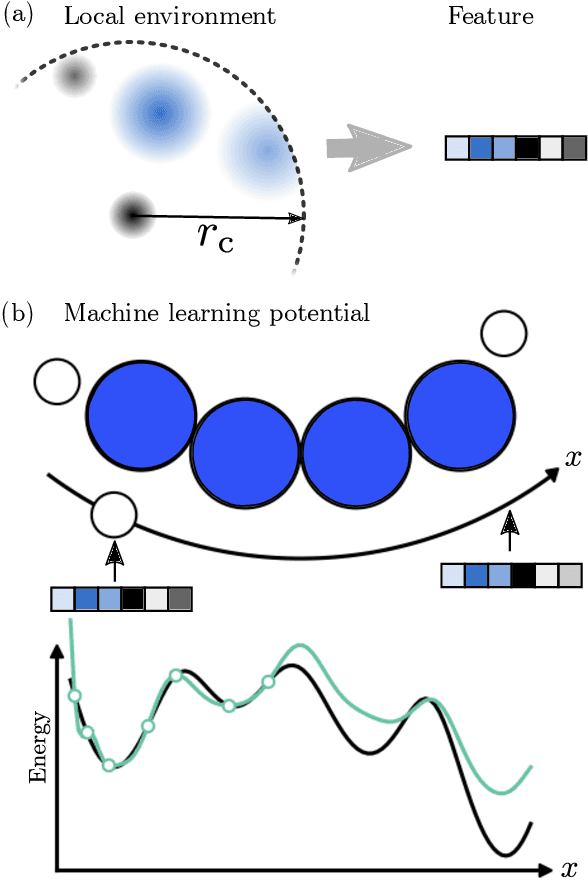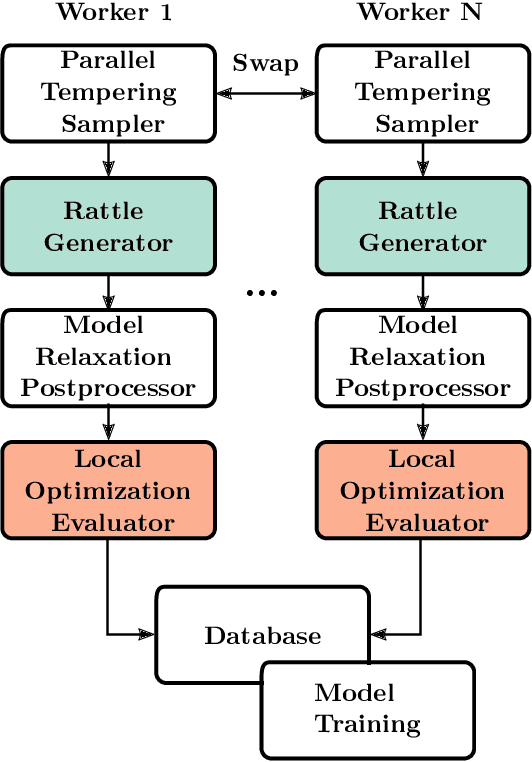Malthe Kjær Bisbo
Atomistic structure search using local surrogate mode
Aug 19, 2022



Abstract:We describe a local surrogate model for use in conjunction with global structure search methods. The model follows the Gaussian approximation potential (GAP) formalism and is based on a the smooth overlap of atomic positions descriptor with sparsification in terms of a reduced number of local environments using mini-batch $k$-means. The model is implemented in the Atomistic Global Optimization X framework and used as a partial replacement of the local relaxations in basin hopping structure search. The approach is shown to be robust for a wide range of atomistic system including molecules, nano-particles, surface supported clusters and surface thin films. The benefits in a structure search context of a local surrogate model are demonstrated. This includes the ability to transfer learning from smaller systems as well as the possibility to perform concurrent multi-stoichiometry searches.
Atomistic Structure Learning Algorithm with surrogate energy model relaxation
Jul 15, 2020



Abstract:The recently proposed Atomistic Structure Learning Algorithm (ASLA) builds on neural network enabled image recognition and reinforcement learning. It enables fully autonomous structure determination when used in combination with a first-principles total energy calculator, e.g. a density functional theory (DFT) program. To save on the computational requirements, ASLA utilizes the DFT program in a single-point mode, i.e. without allowing for relaxation of the structural candidates according to the force information at the DFT level. In this work, we augment ASLA to establish a surrogate energy model concurrently with its structure search. This enables approximative but computationally cheap relaxation of the structural candidates before the single-point energy evaluation with the computationally expensive DFT program. We demonstrate a significantly increased performance of ASLA for building benzene while utilizing a surrogate energy landscape. Further we apply this model-enhanced ASLA in a thorough investigation of the c(4x8) phase of the Ag(111) surface oxide. ASLA successfully identifies a surface reconstruction which has previously only been guessed on the basis of scanning tunnelling microscopy images.
 Add to Chrome
Add to Chrome Add to Firefox
Add to Firefox Add to Edge
Add to Edge